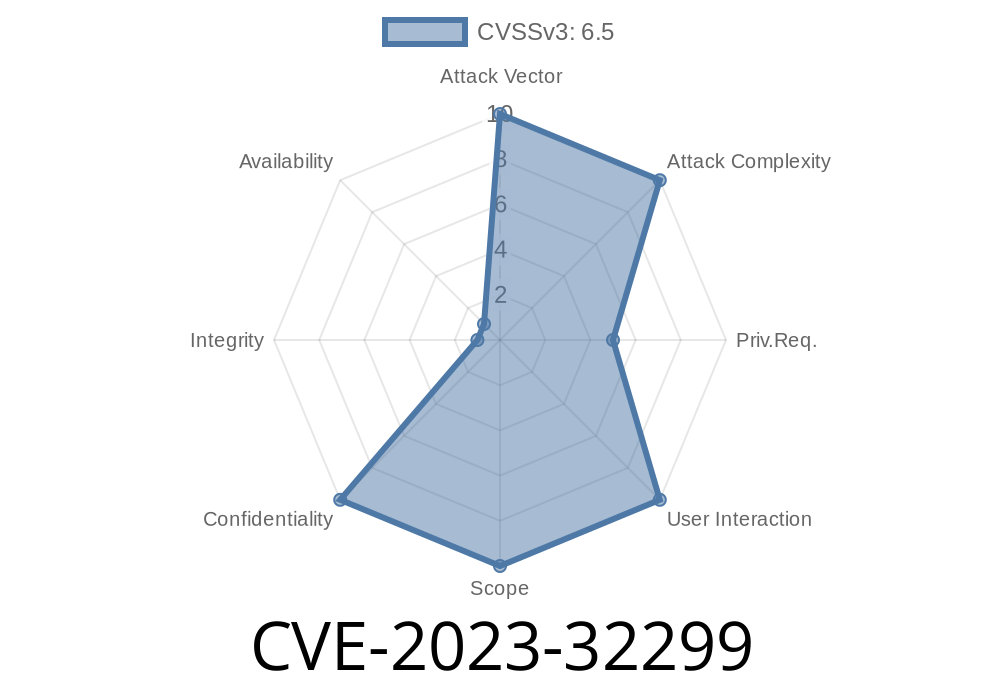---
Introduction
In 2023, security researchers discovered a critical vulnerability identified as CVE-2023-32299 in the WordPress plugin Ni WooCommerce Sales Report. This plugin, widely used by WooCommerce store owners for tracking sales data and generating reports, made a fundamental mistake: it didn’t check user permissions before serving sensitive data. This overlooked detail opened the gates for attackers to exploit incorrectly configured access controls and grab confidential business information.
This post will walk you through what happened, who got affected, how attackers can exploit this, and how you can protect your WooCommerce site.
What is CVE-2023-32299?
CVE-2023-32299 is all about a missing authorization check in the Ni WooCommerce Sales Report plugin. Specifically, it allowed anyone—regardless of their login or admin status—to access reports not meant for their eyes.
Affected Plugin: Ni WooCommerce Sales Report
Versions vulnerable: All versions up to and including 3.7.3 (exact starting version unknown)
Fixed in: Still marked as vulnerable up to the last version reported
How Does the Vulnerability Work?
When you run a website, it’s critical to check that only the right people see sensitive data. With this vulnerability, the plugin simply didn’t check whether someone was an admin or even logged in. That means any visitor could send a request for reports and get sensitive sales, customer, and business data.
Real life example:
Think of it like anyone being able to walk into a bank vault just by knowing which door to open—no guards, no locks.
Let’s look at a basic exploit scenario
The plugin likely uses custom AJAX actions or REST API endpoints to deliver sales reports. Without permission checks, these endpoints respond to any request.
Sample Exploit Request
If the endpoint was something like:
https://example.com/wp-admin/admin-ajax.php?action=ni_sales_report_download&report=full
A normal user (even not logged in) or an attacker could just visit this URL or use curl
curl 'https://example.com/wp-admin/admin-ajax.php?action=ni_sales_report_download&report=full'
And instantly, a sales report would be downloaded, revealing sensitive order and financial details.
Below is a simplified example of how such insecure logic might look inside the plugin
// Vulnerable handler in the plugin
add_action('wp_ajax_ni_sales_report_download', 'ni_sales_report_download');
// The following line is missing, allowing *anyone* to call the action
// add_action('wp_ajax_nopriv_ni_sales_report_download', 'ni_sales_report_download');
function ni_sales_report_download() {
// Missing: current_user_can('manage_woocommerce') or similar check
$report = $_GET['report'];
$data = generate_sales_report($report);
// Output report
echo $data;
exit;
}
What’s the problem?
There’s no verification (like current_user_can('manage_woocommerce')) to see if the person making the request actually has the right access.
References & Official Details
- Official CVE entry - NIST
- WPScan vulnerability database (Ni WooCommerce Sales Report)
- Ni WooCommerce Sales Report plugin page (WordPress)
- Patchstack Threat Intelligence
Risks and Impact
- Sensitive financial data exposed: Sales numbers, customer details, product info, earnings, and more.
Disable the plugin: If a patch is not available, disable the plugin until one is released.
- Check your access controls: Always make sure sensitive plugin actions do not respond to unauthorized users.
Sample .htaccess block
<Files admin-ajax.php>
Order Allow,Deny
Allow from 192.168.1./24
Deny from all
</Files>
Conclusions
The CVE-2023-32299 bug in Ni WooCommerce Sales Report is a textbook example of what happens when developers forget to add basic authorization checks to sensitive functions. If you’re running an affected version of this plugin, act fast: update, disable, and secure your store—as you never know who might come knocking.
Stay tuned for updated patches and always keep your plugins up to date!
Exclusive content by [Your Blog Name], dedicated to making WordPress security simple and clear.
*Have you faced a plugin security scare? Share your story in the comments below!*
Timeline
Published on: 12/09/2024 13:15:29 UTC
